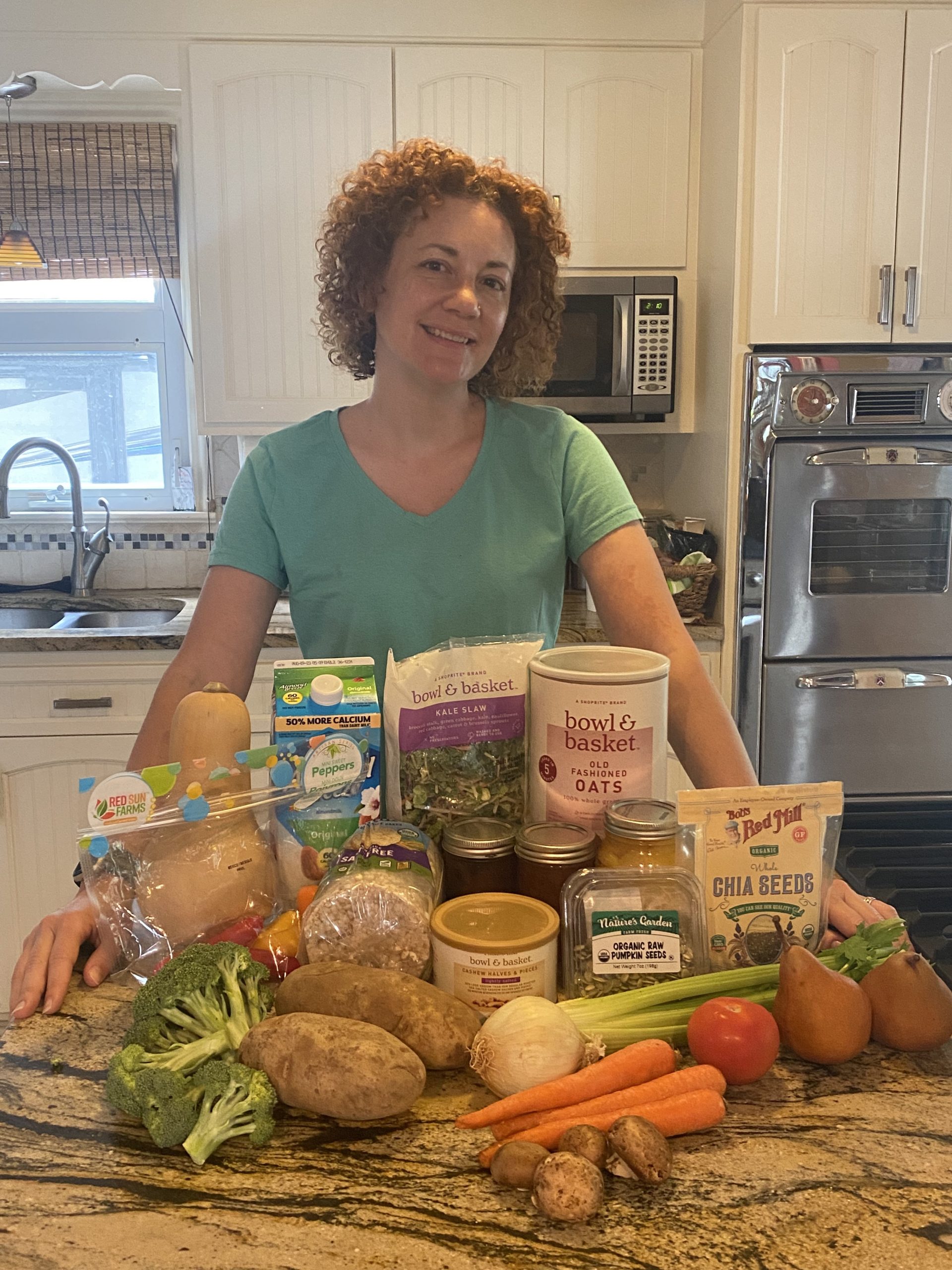I’m not one to follow trends, and I advocate for individualizing all approaches to health, but this current 30 plants a week challenge that has been gaining momentum is one I can really jump on board with!
What is the challenge all about?
It’s a basic concept: track all of the plants you eat each week, and try to diversify your diet to include at least 30 different types of plants. I’ll get into more specifics, but first, some background:
There has been a push in research to look at the importance of the gut microbiome; our gut health is linked to SO MANY aspects of our overall health, much more than anyone realized. This realization jump started additional research into various areas of gut health, which has led to widespread trends. “Leaky gut,” “probiotics,” “digestive health,” and “microbiome” have all become buzz words, and there are plenty of marketing campaigns that have capitalized on the increasing awareness of gut health. As with any trend, there are plenty of new products that overpromise and underdeliver miracle solutions for your gut.
I learned about the 30 plant challenge when doing my gut reset last year (I have a 4 part blog series on that, part 1 linked HERE). As part of my diet plan, I incorporated a 30 plant challenge and tracked all of my plant based eating. I tend to be a pretty healthy eater, plus I’ve been a vegetarian for a LONG time, so I found that 30 plants were easy to eat. Of course, I’ve focused on improving my nutrition for over 20 years, so at this point I am FAR from the typical American diet. According to the current U.S. dietary guidelines, over 80% of Americans are not eating even the minimum amount of vegetables; it’s about 75% for fruits (research linked HERE). Most surprising to me was that the researchers included both French fries and ketchup as vegetables- and the numbers are still woefully low!
So I can see where a 30 plant challenge would seem unattainable, impossible, insurmountable to people. But it’s also a great long term goal for just about anyone, and, barring any health or medical conditions where it’s contraindicated, mostly everyone can make a goal of increasing consumption of plant based foods.
I made a very simple tracking sheet for my challenge. I took a plain sheet of paper and numbered 1-30 down the left side. Every time I ate a plant, I tracked it on the paper. Typically I’d cover a lot of ground in the first couple of days and taper off later in the week, just due to the way I meal plan for a full week and shop for a full week, so there’s repetition of ingredients. But logging the plants definitely increased my awareness of what I was eating, as well as increasing my compliance (if I was at 28 plants on day 6, you’d better believe I was running to the store to grab 2 vegetables before day 7!!).
Some specifics:
- What counts as a plant based food? Pretty much anything that grows. Your typical fruits (oranges, apples, bananas) and vegetables (potatoes, peppers, celery), leafy greens (spinach, kale, butter lettuce), grains (rice, wheat, oats, quinoa), legumes (beans, lentils, peas), nuts, and seeds. Some other plants to count are coffee, popcorn (careful with the butter and salt!), and dark chocolate (not the overprocessed chocolate candies). Herbs and spices and teas also count, but since we use them in such small amounts, I count them as ¼ on my list, not a full 1.
- The same food in a different color can count for multiple list items! For example, if I eat a yellow, an orange, a red, and a green pepper, I’ve had 4 plants, not 1. This is because each pepper has different constituents, which means different phytonutrients, and thus more diversity.
- Once you have counted a plant, you don’t count it again. If I eat stuffed peppers on Monday, I’ll put red pepper on my list. But if I eat a red pepper on my salad on Tuesday, I can’t put it on the list again. We’re counting each plant just once, regardless of the amount. A few bites of red pepper counts as 1. Five red peppers counts as 1. Eating a red pepper every day for a week counts as 1.
- There is no magic number to the amount of plants you eat. Make the challenge your own. I eat really healthy, plus I’m a vegetarian. I can check 30 plants off of my list by day 3. I’ve upped my goal to 40 plants right now. Some of my clients are “anti-vegetable” and almost proudly wear the “I don’t do veggies” badge. Their goal might be 5 plants a week for now. Any increase is a plus. According to the research I’ve seen, there does not appear to be an upper limit where the benefits plateau, nor is there any detriment to increased diversity. You can’t “over-plant your diet;” more veggies, more better.
Some ideas to sneak in some extra plants:
- Get a variety of nuts and seeds. They’re easy to sprinkle on cereal, into yogurt, over a salad, into a sauce. My grocery store has a bulk section where you can buy small amounts and my selection is weighed by the pound. I can get a small handful of Brazil nuts, chia seeds, sunflower seeds, and cashews; this way I’m not spending a fortune on big bags of each kind.
- Buy a bag of mixed greens instead of a head of lettuce. My local grocery store has a container called “spring mix” which has TWELVE different leafy greens!! Almost half of the week’s total can be met by day one if you use this as a salad base rather than one kind of lettuce.
- Make a smoothie. Load it up with plants. You won’t taste less palatable plants if you blend them with stronger flavors like banana, strawberry, mango, or nut butters. I can sneak in a big amount of cauliflower and spinach without tasting it at all. My favorites are vanilla protein powder (I tend to lack for protein sources), ice, and peanut butter mixed with lesser amounts of cauliflower and spinach (tastes like a peanut butter milkshake), and yogurt, a splash of vanilla, frozen blueberries, and a drip of molasses or maple syrup. On a recent camping trip, the local grocery had a frozen “tropical fruit mix” that had papaya and mango and pineapple- it was AMAZING with a coconut non-dairy yogurt, and I counted 4 plants while drinking a pseudo pina colada!
- Add plants to your dinner recipes. If you chop up spinach in a food processor/ chopper/ blender, you can add it to tomato based sauces and gravies and won’t even taste it. If you’re making a creamy sauce, you can blend in cauliflower or splashes of nondairy milks without affecting the flavor of the dish. Zucchini, tofu, and eggplant also have milder flavors, and tend to “absorb” the flavors of other ingredients, so you can add plants with a minimal change to the flavor of the recipe.
Comment and let me know what you think about this challenge! Will you try it? As always, I’m here to help! Reach out and we can look at ways to individualize a plan for you!
And stay tuned: I’m running a group challenge in the near future, where we’ll all embark on this challenge- with personalized goals- together as a Facebook group… I’ll be posting the details soon!
Blessings,
Melanie


